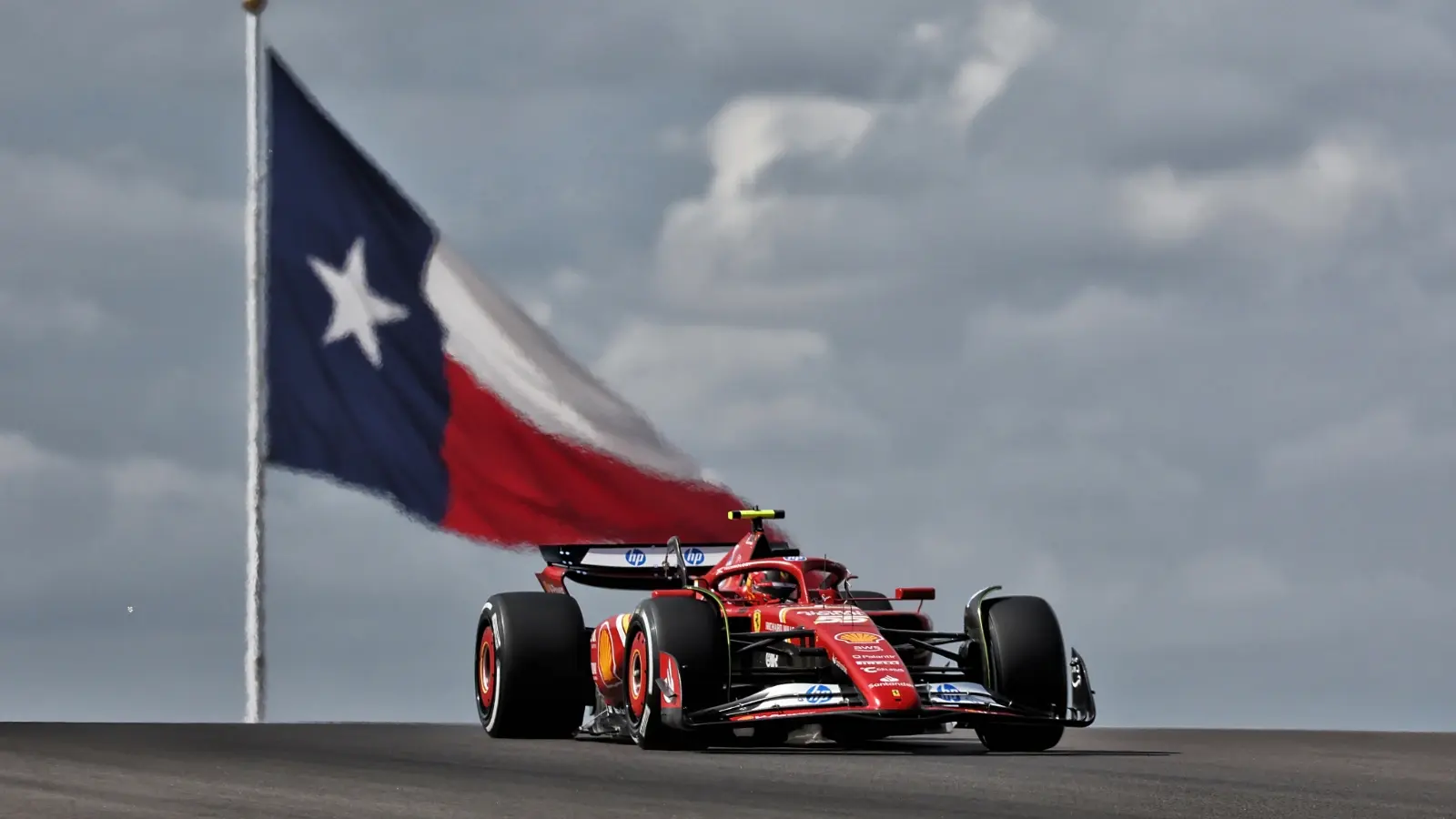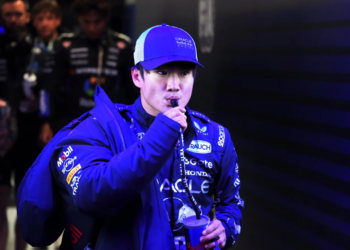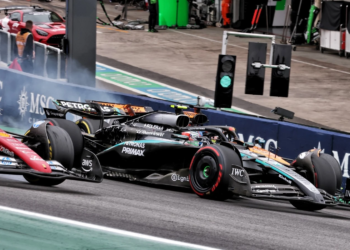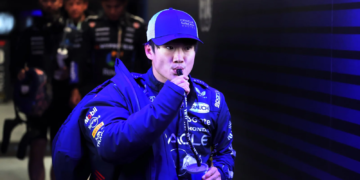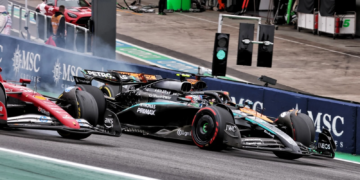November 2012. Formula 1 shows up in Austin at the Circuit of the Americas for the first time. European paddock types are sceptical; Americans don’t do real racing, they said, they prefer ovals and left turns only…
Fast forward twelve years, and COTA now pulls in 440,000 fans across a race weekend. That’s more than Monaco sees in a month. Something about Austin just worked where Indianapolis, Phoenix, and every other previous American attempt failed spectacularly.
Here’s what nobody expected: it wasn’t the racing that made COTA special. The circuit’s good (Hermann Tilke finally got one right), but Austin itself already knew how to throw a proper party. Formula 1 just showed up to an existing vibe.
Race weekends work differently here
European grands prix all follow a script. Friday practice, Saturday qualifying, Sunday race. Fans watch cars, go home, repeat next year. COTA looked at that formula and said “nah.”
The circuit books Eminem for Friday night. Sting plays Saturday after qualifying. Sunday features whoever’s touring through Texas that week. The Grand Plaza functions more like a music festival that happens to have Formula 1 racing as one of the attractions.
Austin’s whole “Keep Austin Weird” thing extends to race weekends in ways Monaco couldn’t imagine. While European circuits maintain their formal atmosphere (jackets required in certain areas, please), COTA embraced Texas’s laid-back approach.
Fans show up in cowboy hats. Food trucks serve everything from championship BBQ to vegan options nobody asked for but everyone tries anyway. Between sessions, people explore various ways to get high without smoking while debating whether Max’s latest move was brilliant or reckless.

This matters because it completely changed who bothers showing up.
COTA attracts people who came for the Killers concert and discovered they actually like Formula 1. College kids treating it like ACL Fest with faster cars. Families making it an annual tradition even though dad’s the only one who knows what DRS means. Not just the hardcore fans who memorize sector times and argue about tire compounds on Reddit.
Why the COTA track works
Most modern circuits feel identical. Tilke designs them, they look fine, drivers complain they’re boring. COTA broke that pattern.
Turn 1 shoots uphill into a hairpin that creates actual overtaking (Monaco could never). The esses through Turns 3 to 6, borrowed from Silverstone’s Maggotts-Becketts complex, flow at high-speed and are technical too, punishing a driver if he’s even half a metre offline. The stadium section is copied from Hockenheim’s amphitheatre setup. It’s essentially a greatest hits album of famous corners, which sounds terrible in theory but somehow works in practice at COTA.
Drivers consistently rank it among their favourites. Max praised the technical variety. Lewis calls it one of the most physically demanding circuits; those sustained G-forces through the esses destroys your neck over 56 laps.
The 230-foot observation tower with a clear glass floor gives you a full circuit view that grandstand seats can’t touch. Spend an hour up there and you’ll understand racing lines better than a season of watching on television. You see why drivers take weird angles into certain corners. Why some overtakes work and others fail spectacularly.
The numbers nobody saw coming
On the opening weekend in 2012, the circuit attracted 265,000 fans. Respectable but not remarkable…
Then something shifted. Netflix’s Drive to Survive introduced Formula 1 to Americans who thought racing was just NASCAR. COTA kept booking bigger musical acts. Austin’s reputation as America’s coolest city spread beyond Texas. By 2025, attendance hit 440,000.

Circuit boss Bobby Epstein openly talks about targeting 500,000. That’s not a fantasy number—it’s actually achievable.
Compare Silverstone’s 480,000 (spread across four days including support races) to COTA’s three-day sprint. The Austin GP consistently ranks among the highest-attended races of the Formula 1 season. Monaco may be exclusive and prestigious for sure but more people want to be in Austin.
COTA forced Formula 1 to completely reconsider its American strategy. Miami and Las Vegas followed COTA’s entertainment-first model instead of the traditional European approach. Whether that’s evolution or selling out depends on whether you’re a purist or someone who checks ticket sales.
The commercial success, however, is undeniable.
What you get beyond racing
COTA sits 30 minutes from downtown. This creates problems (traffic’s genuinely terrible) and opportunities (you can actually escape to real city life).
Saturday after qualifying, thousands head to Sixth Street’s bar district. Or Rainey Street’s more upscale scene if you’ve got the budget. Sunday post-race, downtown fills with papaya McLaren orange and Ferrari red. Hotel bars become impromptu paddock extensions where fans debate whether that last-lap move was legal.
Austin’s food culture rivals its music reputation. Franklin Barbecue draws lines that compete with COTA’s Turn 1 grandstand for wait times. Breakfast tacos with brisket became a race weekend staple; somehow nobody introduced these to California yet. Lady Bird Lake offers kayaking for anyone needing to decompress after eight hours standing in Texas October heat, the choices are endless.
The mixing of cultures creates something European venues struggle to replicate. Full racing suits sipping craft cocktails next to Longhorns gear next to locals who wandered over from a music venue wondering what all the noise is about. It’s chaotic in the best way.
What COTA proved
COTA didn’t just give Formula 1 an American home. It proved American sports culture and European racing traditions could merge without one destroying the other.

You can maintain proper technical racing standards while embracing entertainment elements that Monza would consider beneath its dignity. Both things can coexist; shocking, apparently.
Drivers notice the difference. Post-race interviews at COTA consistently get more relaxed, genuine responses than most circuits see. Even the notoriously serious Formula 1 paddock loosens up slightly when surrounded by Texas Hill Country instead of European industrial parks.
Whether other circuits follow COTA’s festival model or double down on traditional racing purity will define Formula 1’s next decade. That debate’s already happening in every paddock from Melbourne to Monza.
But Austin already settled one argument: Americans will absolutely show up for proper racing. Just let them enjoy it their own way instead of forcing European traditions that don’t translate into American…

